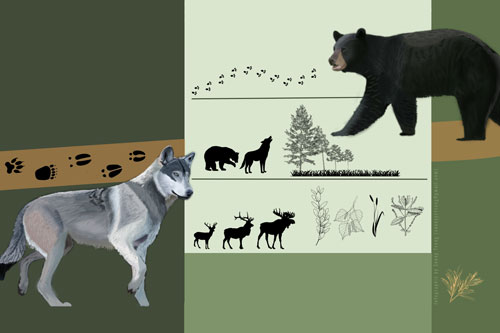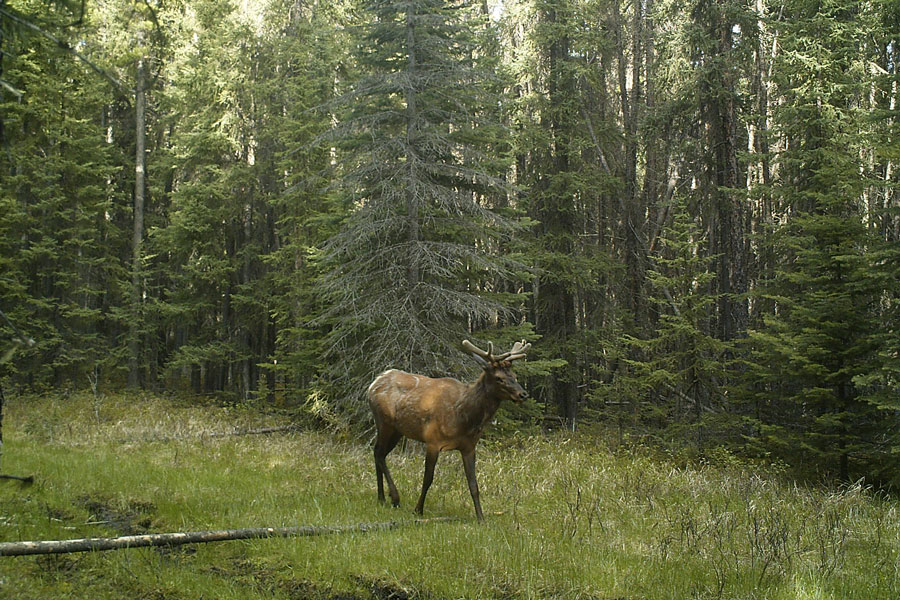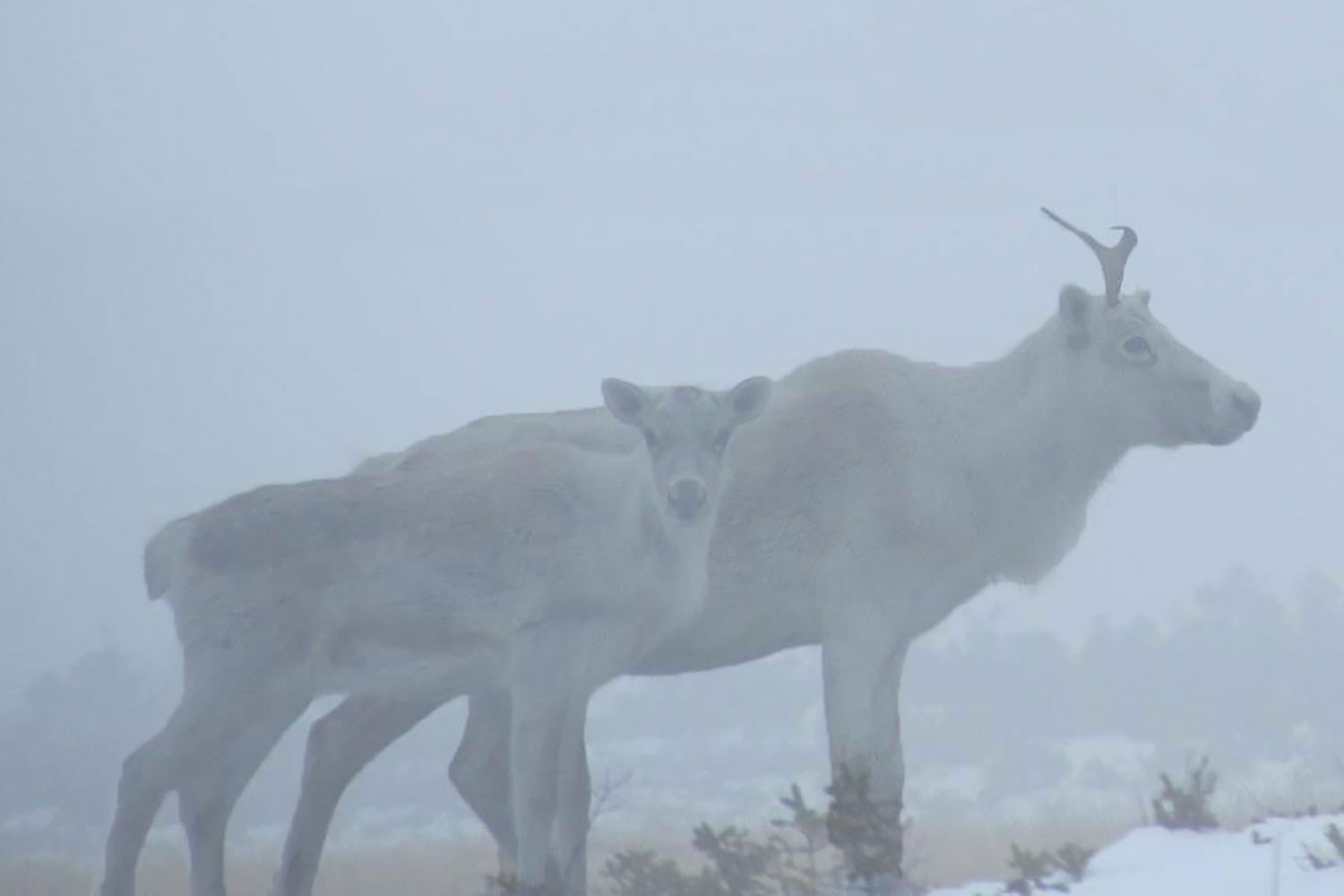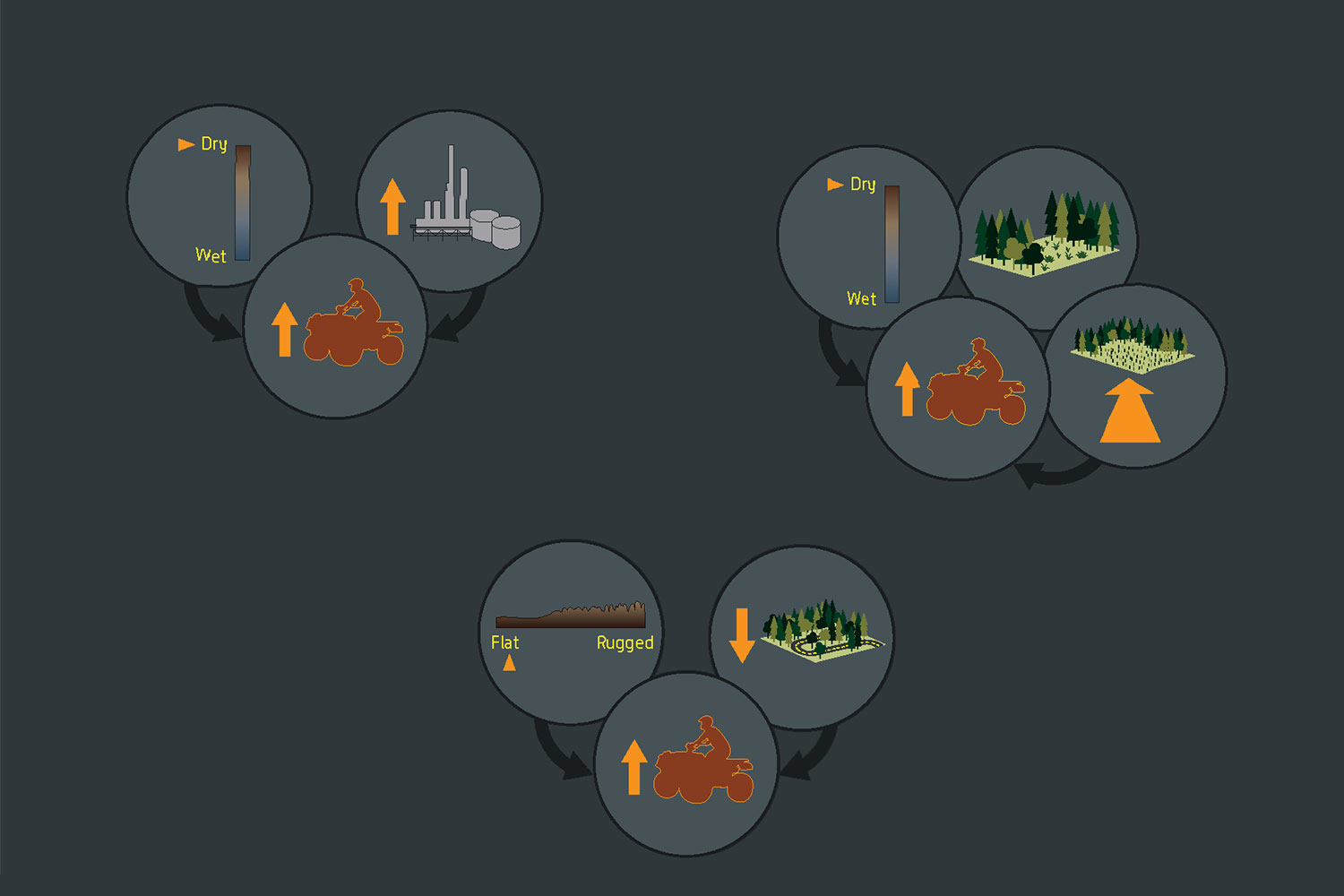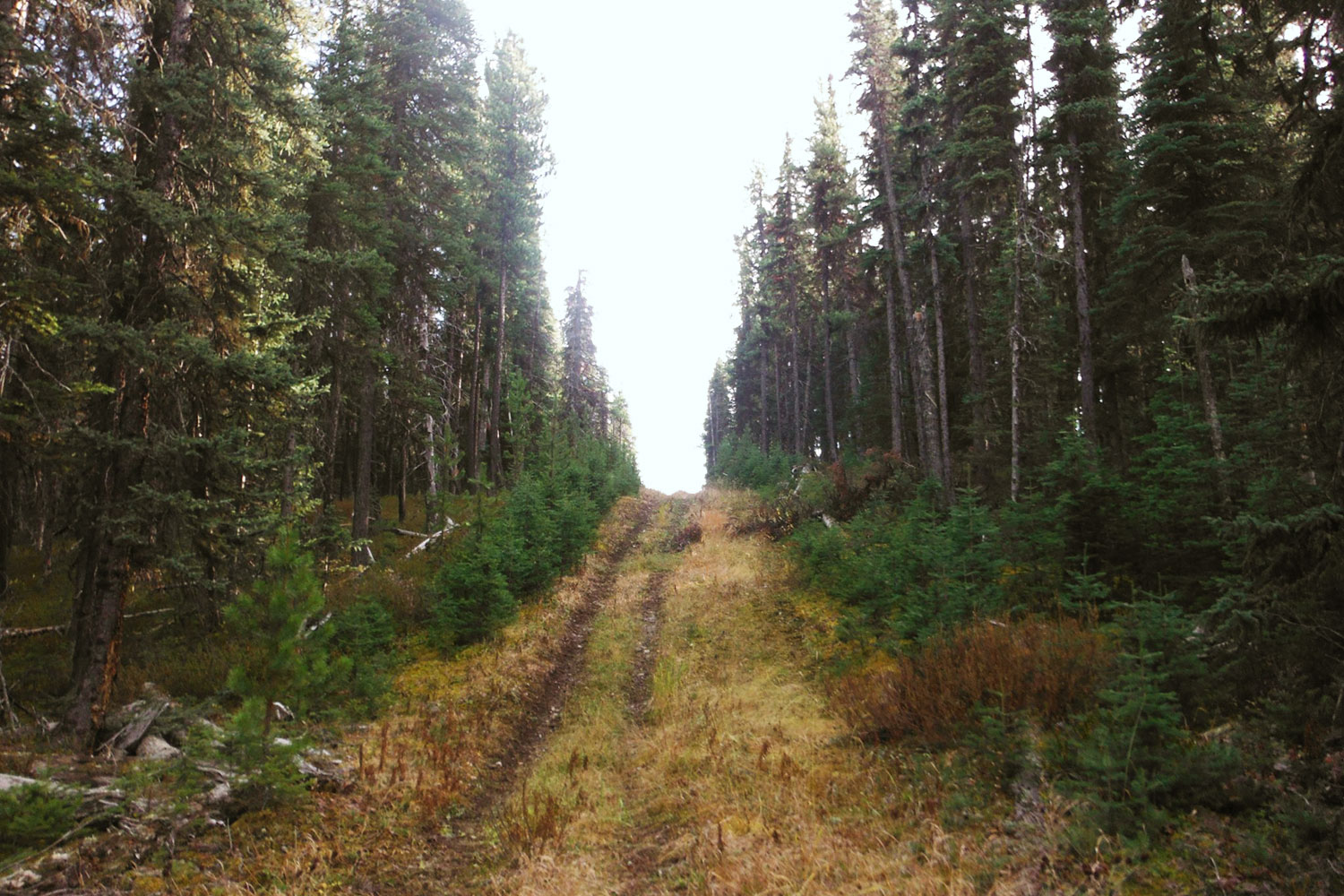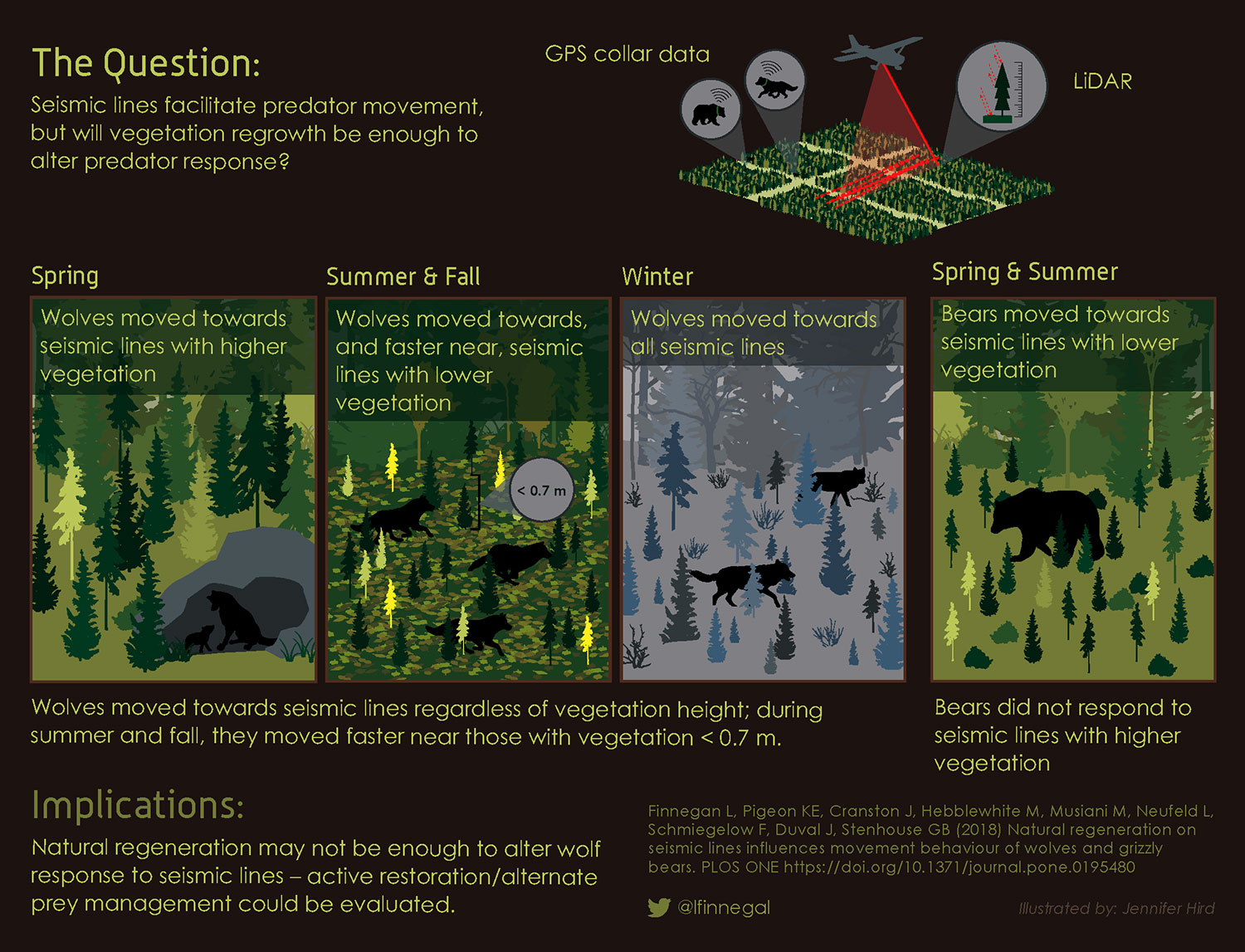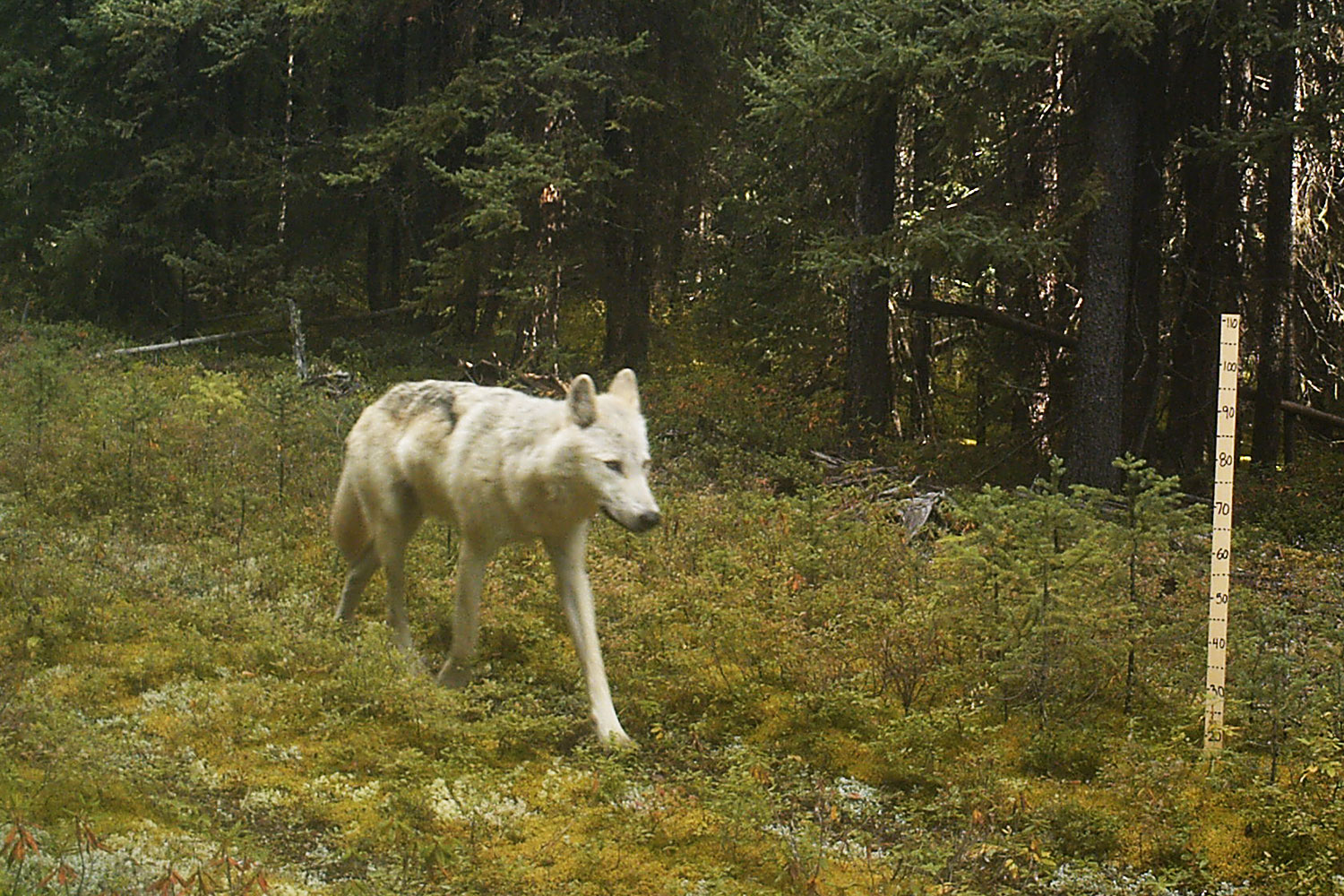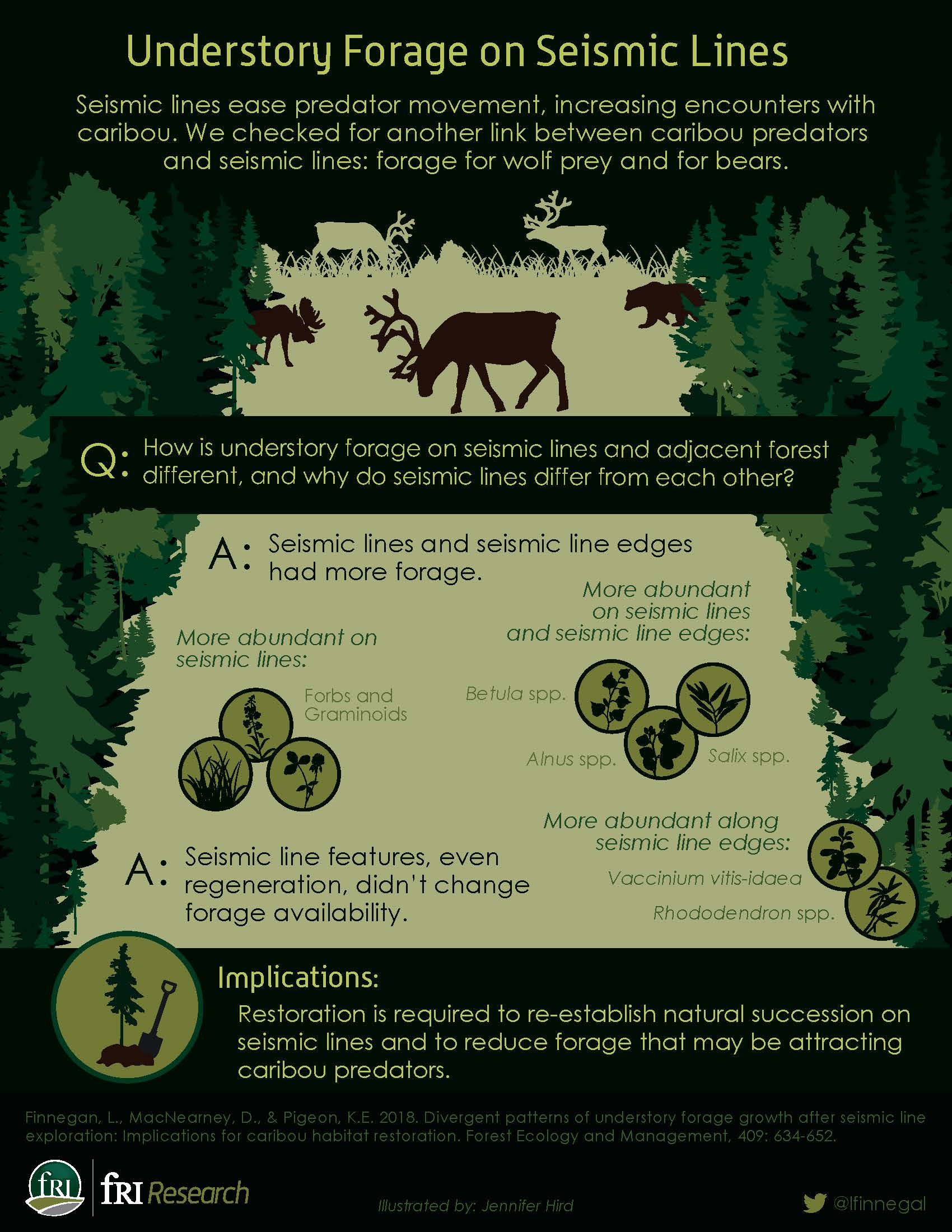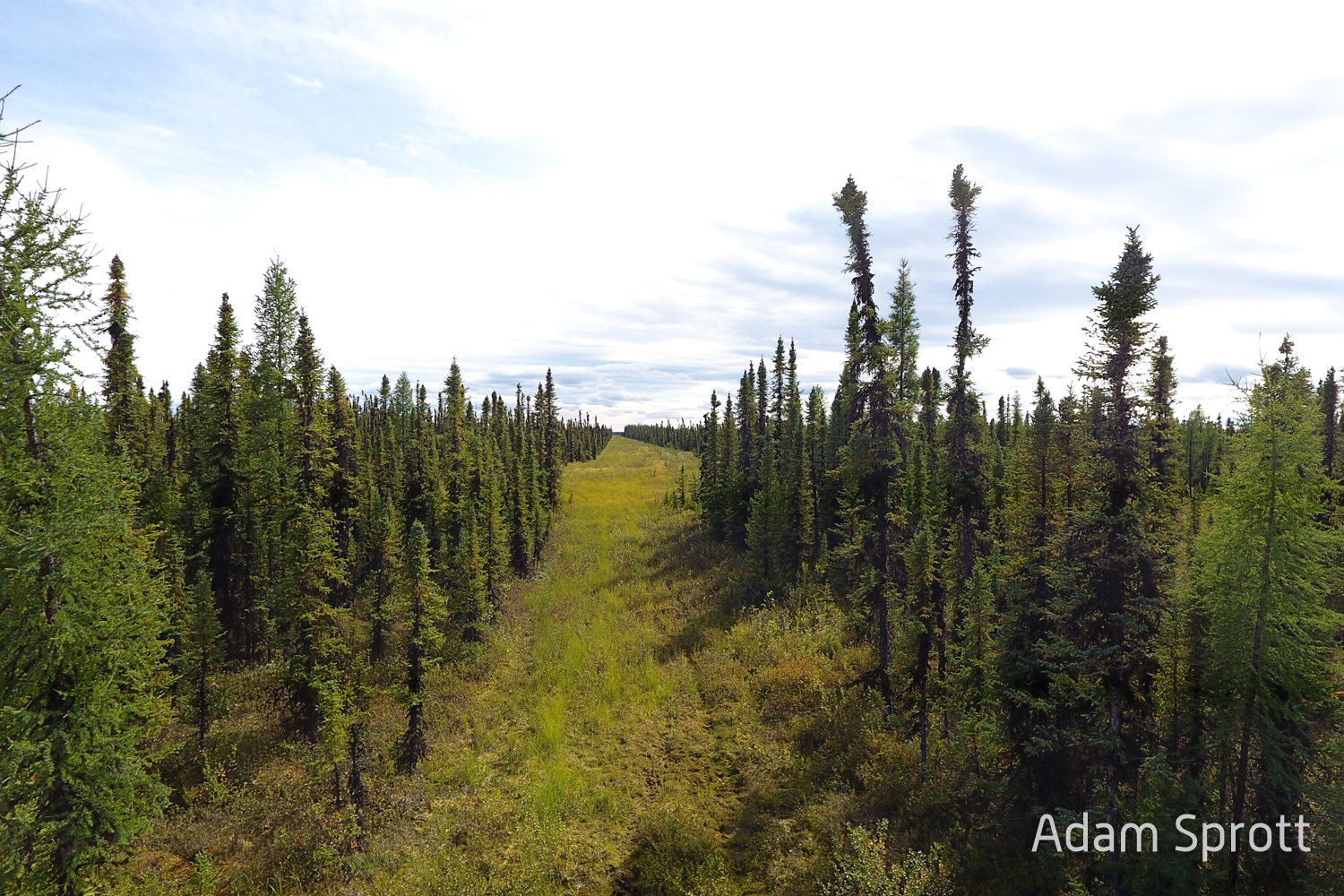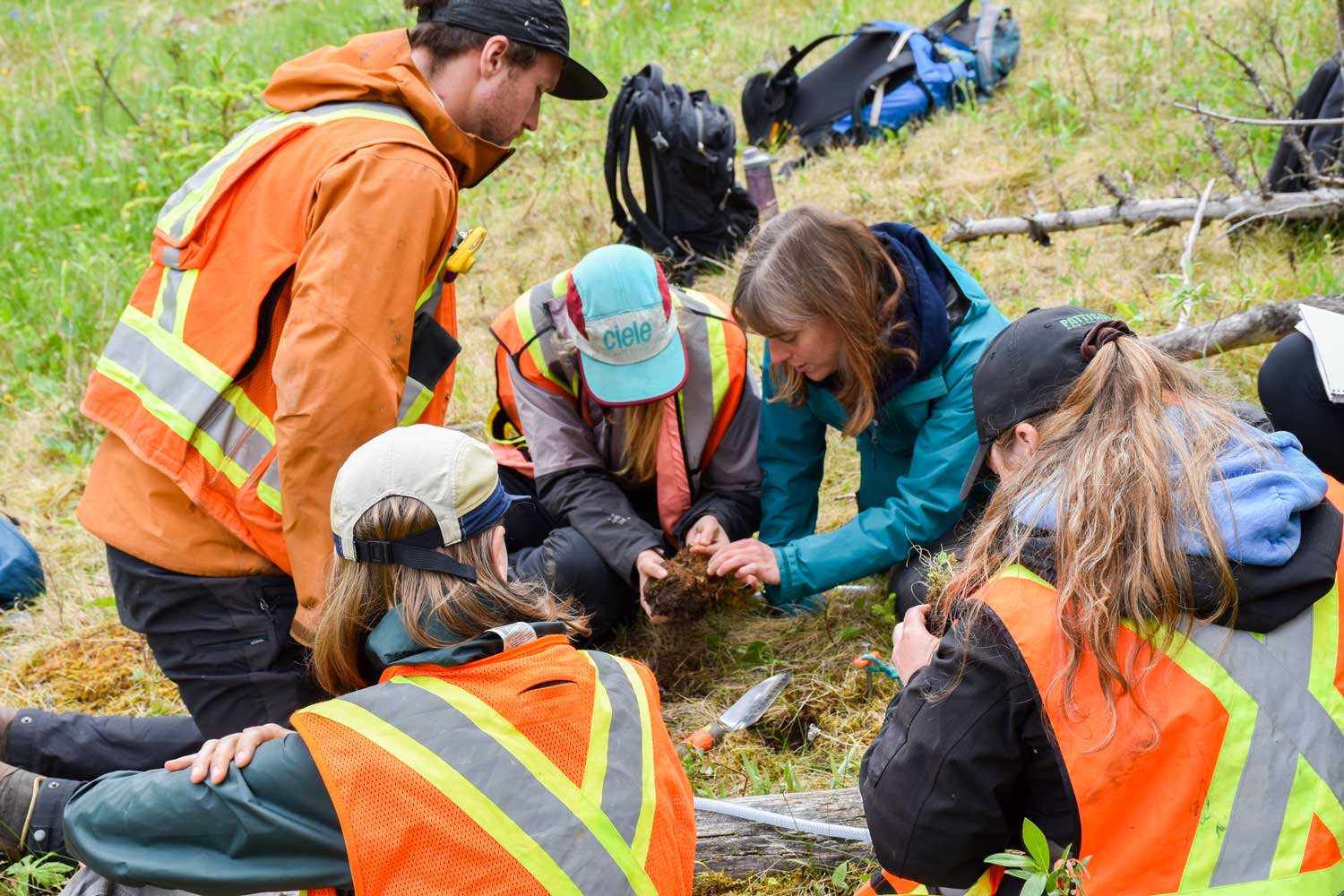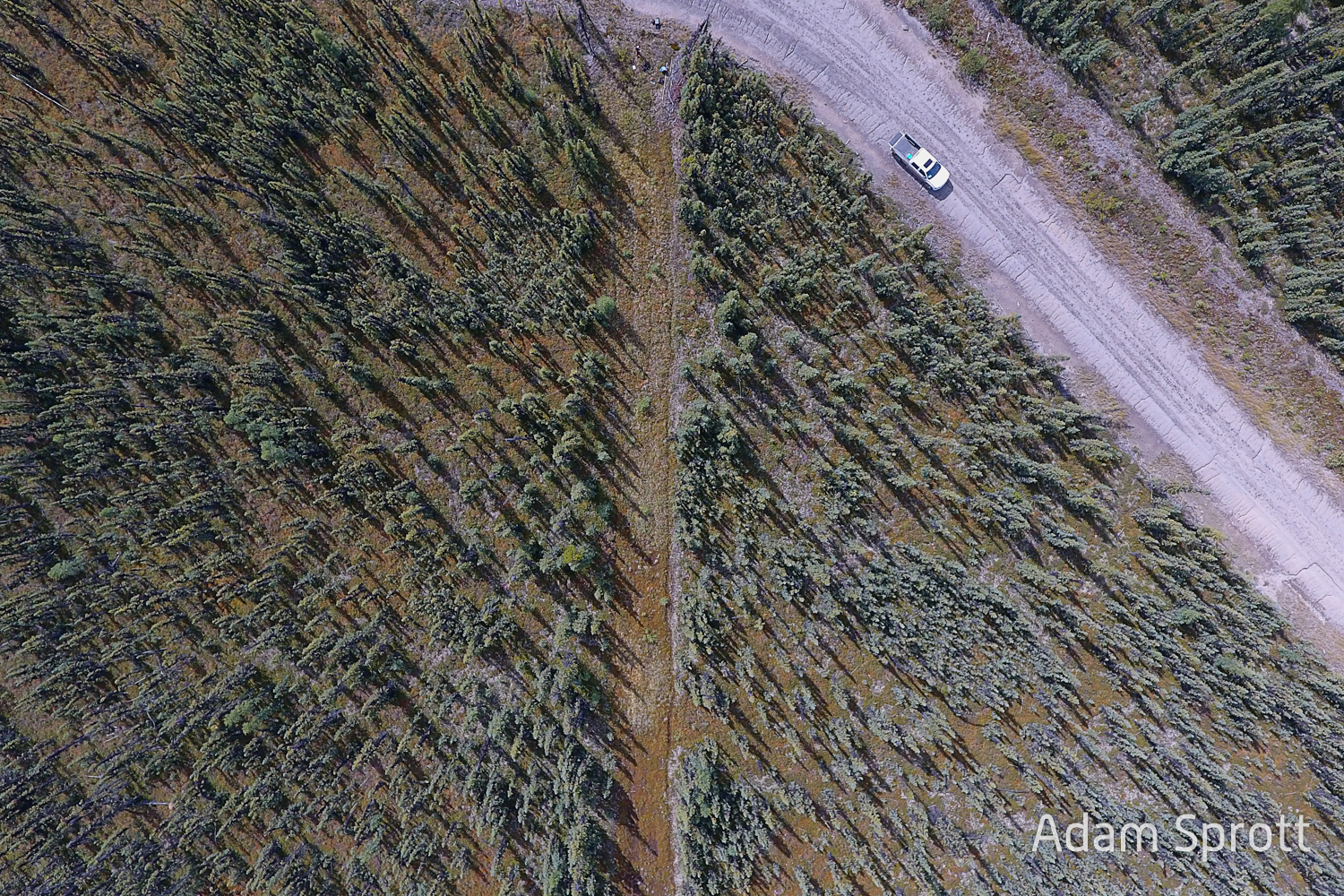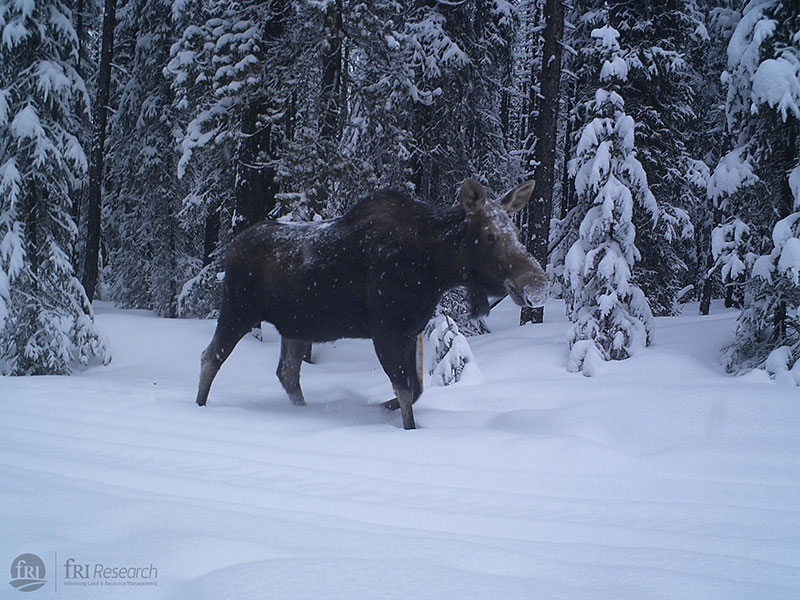
Restoration of Seismic Cutlines in Caribou Range in West-Central and North-Western Alberta: maximising success and targeting areas used by alternate prey
This single year Habitat Stewardship Program Species at Risk Stream project will improve threatened boreal caribou and endangered southern mountain caribou habitat by increasing undisturbed habitat within caribou ranges in west-central and north-western Alberta. It is supported by Environment and Climate Change Canada, AUPRF/PTAC and FLMF.
Caribou are declining across the boreal forest and the primary threat to population persistence is habitat disturbance. Restoration of disturbed habitat within caribou ranges is both a federal and provincial priority.
The study area encompasses the entirety of the ranges of the Redrock Prairie Creek, A La Peche, Narraway, Little Smoky, and Chinchaga caribou herds in Alberta, excluding areas that fall within parks and protected areas (parts of the summer ranges of A La Peche, Narraway and Redrock Prairie Creek herds).
This proposed project will use high-resolution remote sensing data on seismic line regeneration, GIS based data of ecosite and site characteristics, and existing field data (ungulate food and species composition) collected along seismic lines in west-central and north-western Alberta. This will be used to determine how regeneration and other attributes of seismic lines affects use of these features by alternate prey (moose, deer, and elk) that attract caribou predators, and to identify seismic lines that are on a trajectory towards natural recovery versus those that will need active restoration.
We will use these new data to further refine priority seismic lines for reclamation identified through our previous HSP-funded work (empirical analysis of caribou, caribou predator, and human response to regenerating seismic lines). Ultimately we will provide land managers with GIS-based maps of seismic lines in west-central and north-western Alberta prioritized for reclamation that maximise benefits for caribou, and that maximise the efficacy of restoration efforts.
This project has been developed in collaboration with resource users within caribou ranges, and continual outreach activities (workshops, website updates, documents) throughout the project will make available the tools produced by this project for management and reclamation plans across the range of these five caribou herds. This will ensure that reclamation of caribou habitat is based upon science, and also that restoration effort is directed to areas are the most beneficial for caribou.








